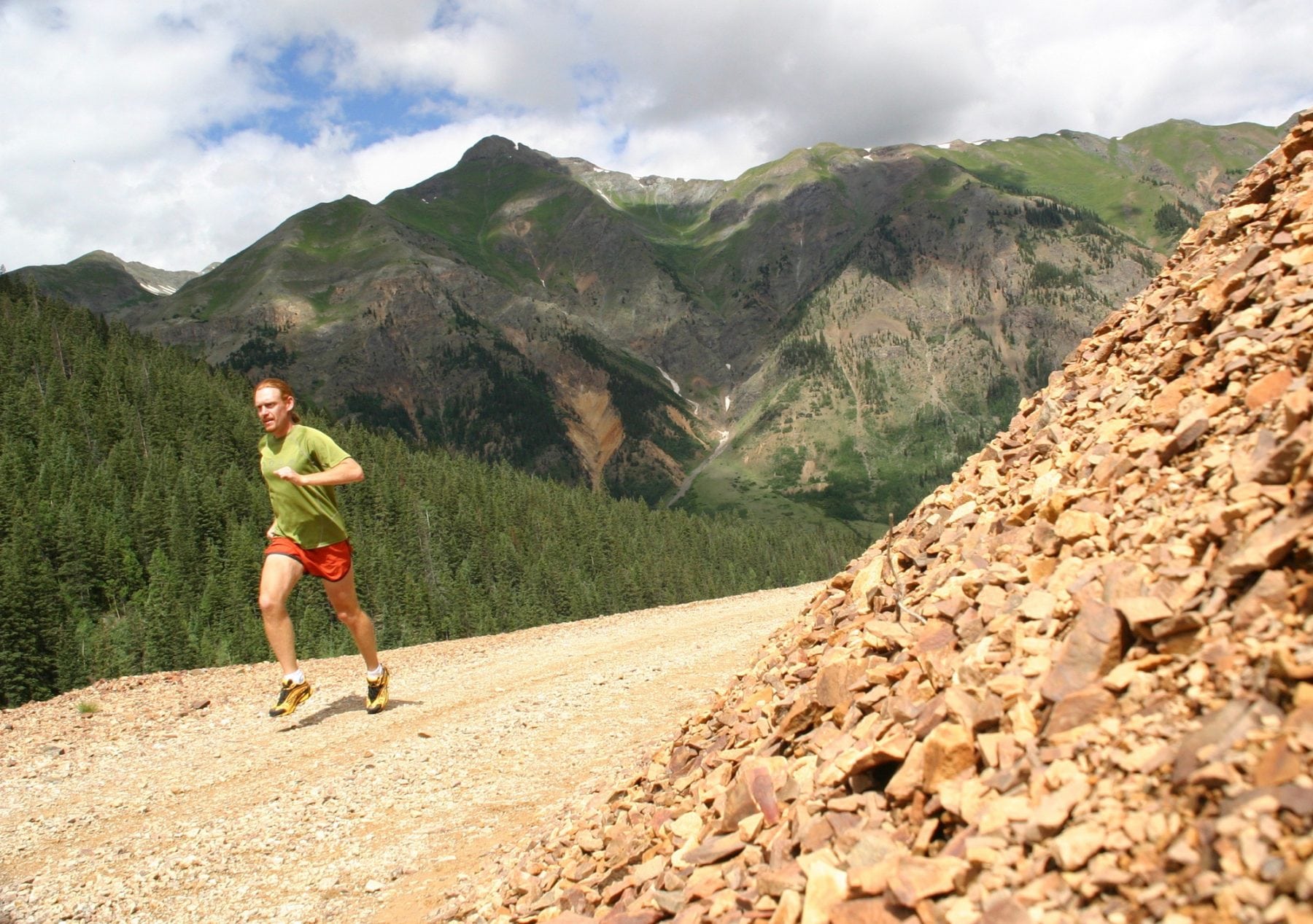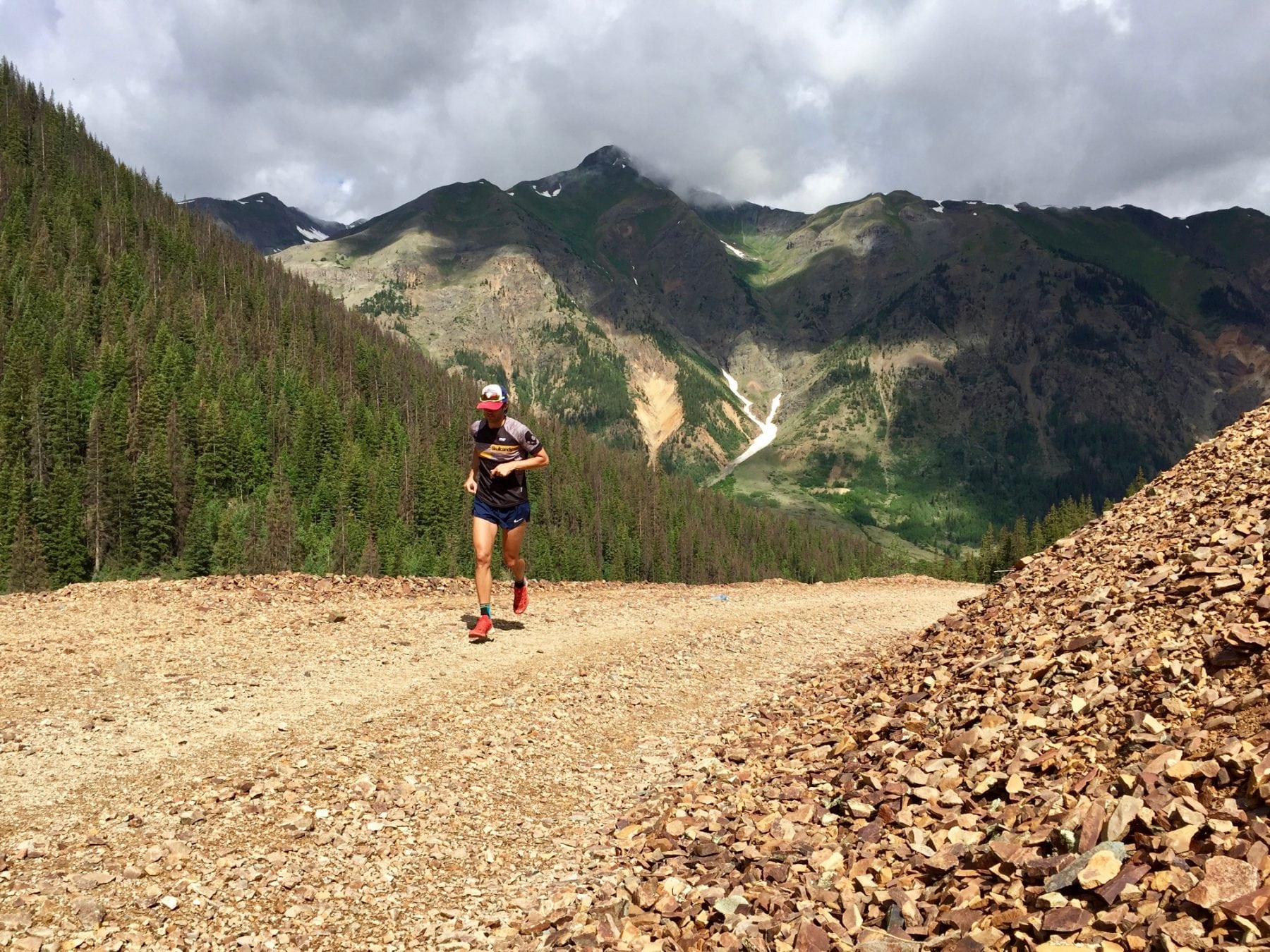Fall comes early to Silverton, Colorado, which sits high in the mountains at 9,300 feet. It begins above treeline in late August, tinging the tundra orange and red, and then sweeps down the slopes into the trees and down the valleys. By mid-September, the aspens are blooming in gold, and a month later those leaves are all gone while the effect continues farther down, where I live on the edge of the desert in Durango at 6,500 feet. The cottonwoods down lower in Utah and New Mexico keep their leaves until November, when snow blankets the high peaks in the distance and ice forms on the banks of the rivers. Fall–or ‘autumn’ if you want to be bourgeois about it–is a glorious festival of colors.
But I’m color blind. That can mean many things, but in my case it means that I can see most colors just fine, but some blend together in ways that seem strange to most people. For example, as a child I never understood why purple was its own color. It just looks dark blue to me. And many shades of green and red blend together in my eyes. Perhaps the contrasts are not as distinct for me, so while I can see color just fine, I don’t possess the correct vocabulary for colors because I can’t test those words against reality. The descriptions above of the colors of fall are probably true for two reasons, the first being that I’ve learned from our culture what fall is supposed to look like, and the other being that fall colors are super dramatic and apparent even to my myopic vision.
One thing that’s nice about not being able to see certain shades of color is that I can’t see the reddish tint that is coming to many of the pine trees in Colorado. Pines are not coincidentally part of the ‘evergreen’ family, which means, as you probably know already, that they are supposed to be green. Like, all the time. That many of Colorado’s pines are now turning red is a sign that they are dying. The mountain pine beetle is a natural insect in western forests, but like any cancer, now that it has experienced a population explosion it is killing whole forests from Canada to Mexico. The National Park Service’s website summarizes the process like this:
“Hard winters with cold temperatures can kill beetle eggs and larvae wintering under a tree’s outer bark. Related to general climate warming, average winter temperatures in the Rocky Mountains have been higher than normal over the past ten years. Trees have also been weakened by a prolonged period of low precipitation. The combination of milder temperatures and low precipitation has aided a vast outbreak of beetles.”
This is a result of anthropogenic (human-caused) climate change. There is plenty of reason to be unhappy about this, but it is now a fact. I live in southwestern Colorado, just outside the state’s largest wilderness area: the Weminuche Wilderness. In the eastern end of the Weminuche, near Wolf Creek pass, the pine beetle has turned whole valleys into stands of dead timber. The western reaches have been slower to be affected, but the beetle’s march continues. It’s not unreasonable to think that in five years, most of the pine trees that runners in the Hardrock 100 pass beneath will be grey and needle-less. There are many admirable efforts underway to combat the outbreak, but most of the science being done is in effort to understand the process. Beetle kill is a reality.
That’s one way of seeing the issue. There are other ways too, one of which is summed up by the title of George Sibley’s two-part article in the Mountain Gazette from December 2007 and January 2008: “The Dead Forest and the Next Forest.” Many of our forests are dying now, but there will be another forest to come. Sibley says:
“…the infestation will eventually run its course; there will come a summer when most of the pine and spruce beetles boring out of their reddening trees will be unable to find any remaining mature trees alive within their range, and their specialized appetites will be their undoing: wanting only to highgrade big old mature trees, the bugs will ignore all the young trees that are already growing up around the dead trees, and the plague will peter out even as the forest returns.”
But that doesn’t mean that our children will have the same forests that made the Rockies famous. The new forest will be different, although I don’t think anyone can say for sure what it will look like. There is good reason to think that this new one will be more suited to new climate norms, like higher temperatures and less moisture. Sibley suggests that lower-elevation aspens will probably be replaced by sage and grasses, “plants that like it hotter and drier.” He thinks pine forests will grow back higher on southern slopes, unless they are killed by lingering pine beetles, and he wonders if lodgepole pine forests will “be replaced, in their lower reaches, by more drought-tolerant pinion pine and juniper.” He finishes with this: “All we can say for sure is that climate change will cause changes in our relationship with the Next Forest–in ways we can’t know till we see what is actually happening in the forest.”
Forests are big obvious things, so their deaths are equally obvious. Looking at a dead forest makes you feel colorblind, like you’re missing a crucial part of existence. Perhaps this will alert more people to the deeper causes of the conditions that are changing the forests, and cause us to connect our actions to these effects. We can use this as a catalyst to reinvent our approach to the places we love–there is far more adventure in sustainable travel than conventional travel, and now a highly visible reason to practice it. If nothing else, the changing forest is a fascinating phenomenon to pay witness to, even if it may have foreboding consequences.
My purpose in writing this is not to cast blame, which is easy for those of us who myopically lament the past without considering the future. Rather, as a mountain runner, I am interested in issues that affect the mountains I run through. The forests I have grown up around are dying, but I am not dying, nor is the sport of mountain running. The Hardrock 100 is not going to disappear with the death of the pine forests, but the experience will be different. And those of us who practice this sport will decide what that experience will be like. The lense through which we choose to view this issue will define our character, both as individuals and as a community.
We can use our knowledge of the human causes of the beetle-kill epidemic as a reminder. As mountain runners, we can set an example for the rest of the outdoor industry of what mountain adventure can and should be. Some parts of our lifestyle are not good for the long-term health of the places that give us so many wonderful experiences, but it’s not the end of the world. There’s no reason to give up. We should look to our monochromatic forests to see how much there is to gain in protecting the next forest. Reducing our reliance on fossil fuels, refusing plastics, conserving water, and other common practices will simultaneously be better for our forests and augment the experiences and adventures that give our lives so much value. Going slower and working harder is often a lot more rewarding. The sacrifices are the conveniences of consumerism and travel. But in exchange, we will learn a much deeper valuation of place and distance and partnership. And we’ll give color back to our mountains.
Call for Comments (from Meghan)
- Have you noticed if your local pine forests are being affected by the mountain pine beetle? If so, what are you seeing? In what unit of time are you observing change and what percentage of the forest is it affecting?
- Do you modify or have you considered modifying your behavior as a trail runner or as a global citizen to reduce your environmental impact?
- Do you think this is a conversation the trail running community needs to more consciously have? That is, do you think it’s time for us to consciously consider the environmental impact of our sport?


